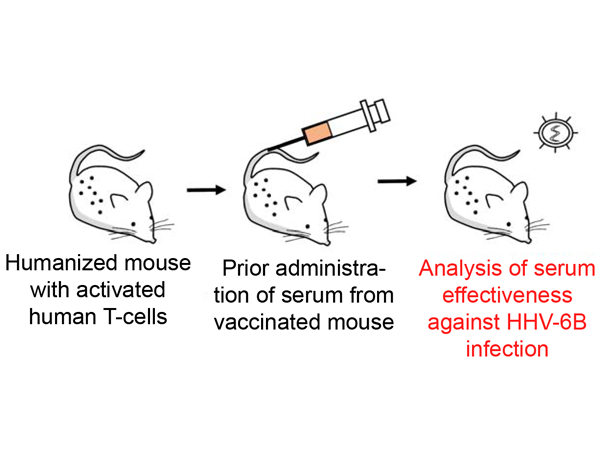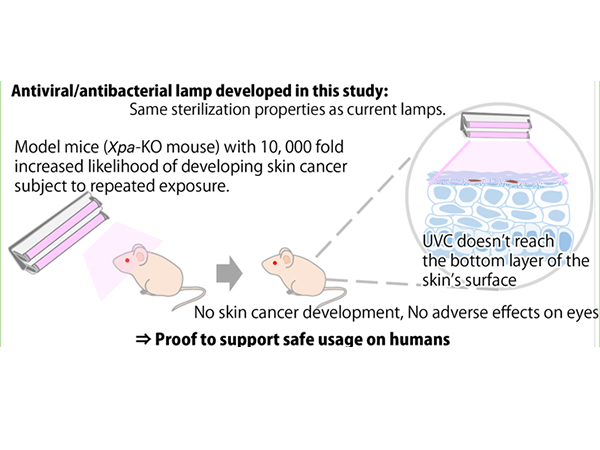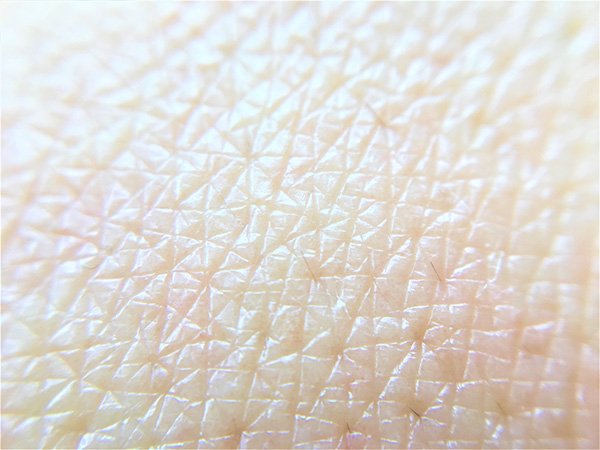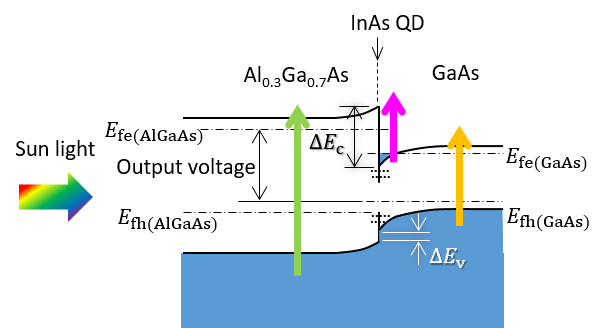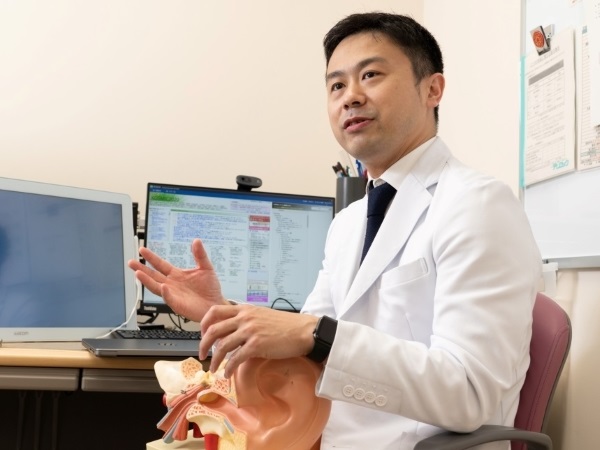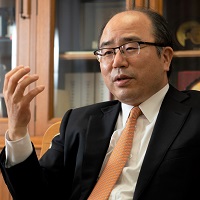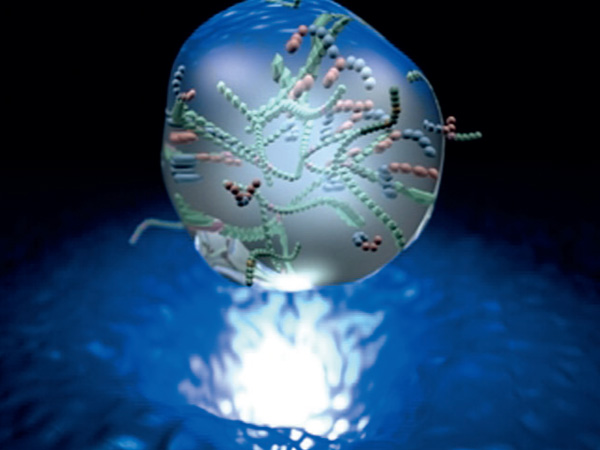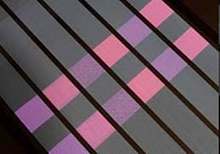
The Kobe University Graduate School of Engineering and the Graduate School of Medicine have jointly developed the world's first new mercury-free light source that produces ultraviolet radiation for medical applications. The technology for the "made-to-order skin treatment equipment" is possible due to an industry-academia-government collaboration. It is currently being certified as a medical instrument, and sales are expected to begin in October 2015. This equipment should effectively treat skin diseases such as atopic dermatitis, leucoderma, and psoriasis. Because it can deliver high-intensity radiation to only the affected area, it should reduce the treatment time and patients’ stress.
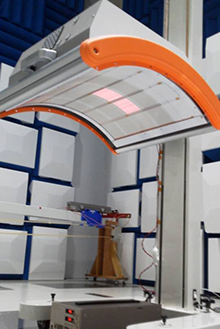
It can pinpoint UVB radiation to only the affected area, which should relieve patients' stress.
Ultraviolet radiation, which is divided into UVA (wave length: 400 to 315 nm), UVB (wave length: 315 to 280 nm), and UVC (wave length: less than 280 nm), is common in medical and environmental fields as well as in industry. However, many ultraviolet light sources are mercury-based, but due to the adoption of the Minamata Convention on Mercury in October 2013, the production and import/export of products with a mercury content above a certain threshold, such as illumination lamps, will be prohibited from 2020, in principle. Therefore, there has been an urgent need to develop mercury-free light sources.
Since 2007, Professor KITA Takashi at the Kobe University Graduate School of Engineering had been developing innovative non-hazardous and environmentally friendly deep ultraviolet phosphors to realize non-mercury ultraviolet light sources. His work has led to the development of electron-beam excitation-type and plasma excitation-type light sources. In particular, his plasma excitation-type ultraviolet light source, which is a mercury-free source that radiates UVB, has been investigated for phototherapy as a medical treatment since 2012 in collaboration with Professor NISHIGORI Chikako at the Graduate School of Medicine, YUMEX Inc., Orion Electric Co., Ltd., PLEXY LLC, DYDEN Corporation, and the Hyogo Prefectural Institute of Technology. These efforts have resulted in the world’s first film-type ultraviolet light source that produces ultraviolet radiation from plasmas via a phosphor containing gadolinium as a contrast agent for medical imaging of the human body, instead of via mercury that has a high enviro.
Professor KITA says, "The results of this study are revolutionary, and may reshuffle the power relationships for medical ultraviolet light sources. We have already successfully developed a light source with a bactericidal wavelength of 263 nm. In the future, we hope to further improve this technology and realize applications for water sterilization and other uses."
nmental load. This mercury-free light source is optimal for phototherapy treatments that do not burn the skin because it emits light at a wavelength of 310 nm, which is close to the narrow-band UVB frequently used at present in medical settings. Unlike conventional electron-beam excitation methods for phosphor excitation, the plasma excitation method employs technology similar to that used in plasma televisions, allowing a large area to be economically treated. However, its biggest advantage is its ability to pinpoint the location where light is delivered. Hence, this "made-to-order skin treatment equipment" can precisely deliver UVB radiation to only the affected area, which should relieve patients' stress. Currently, the plasma excitation light source is being certified as a medical instrument, and sales are expected to begin in October 2015 when its effectiveness is proven to be at the same level as that of conventional mercury-based treatment equipment.






